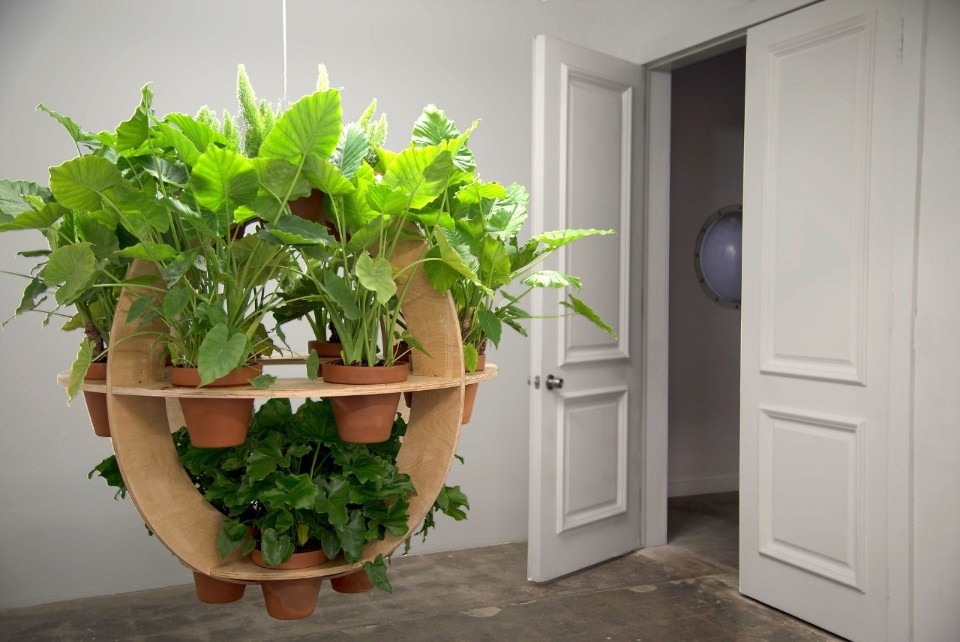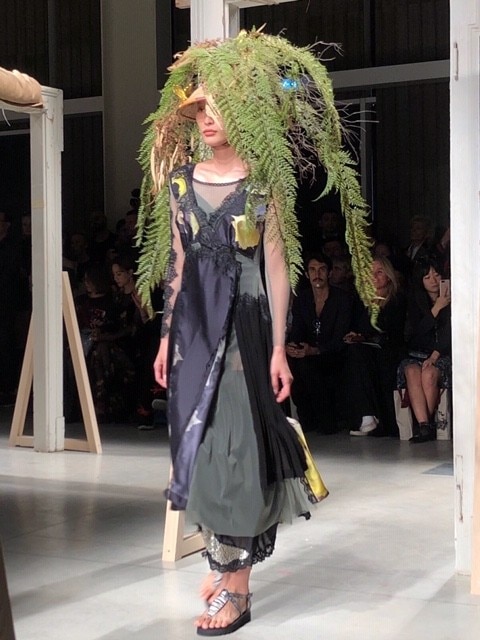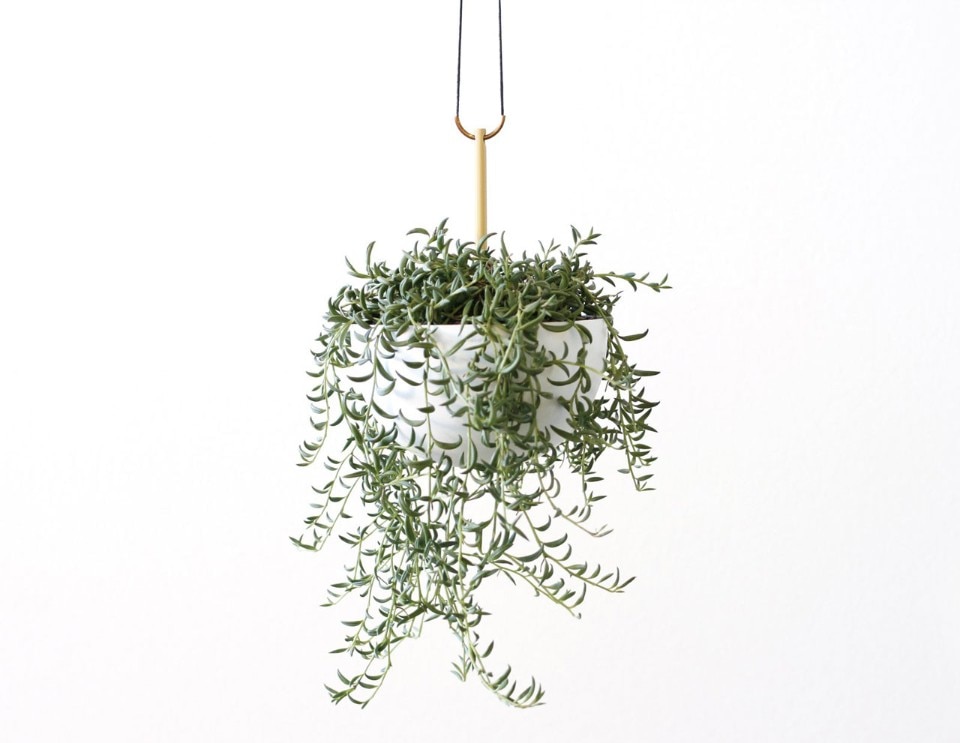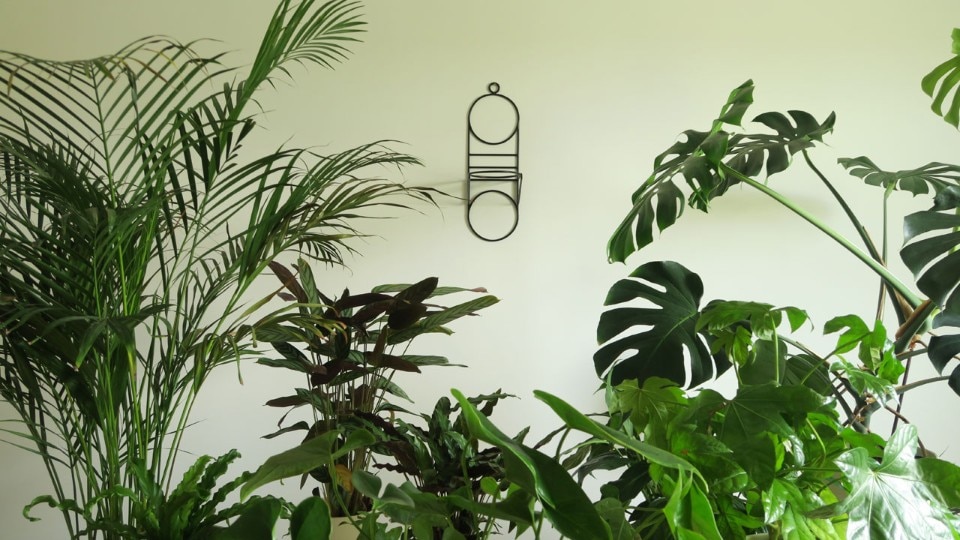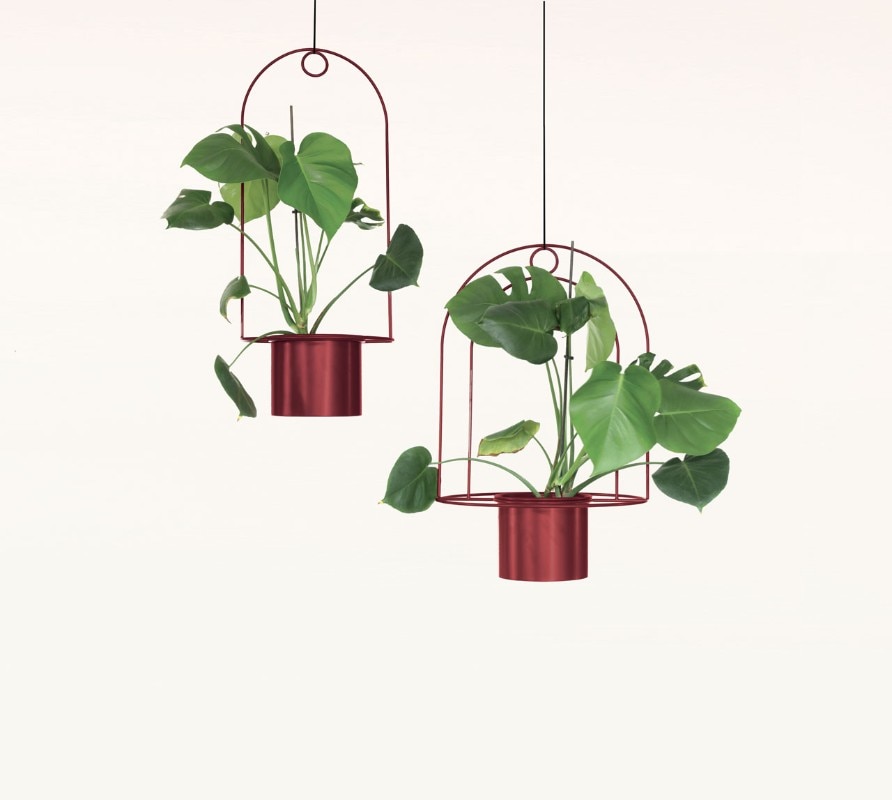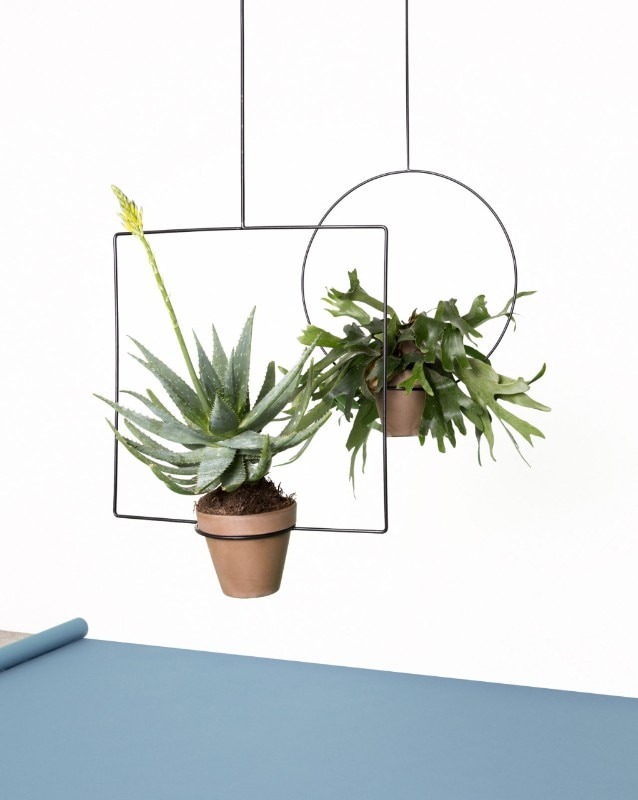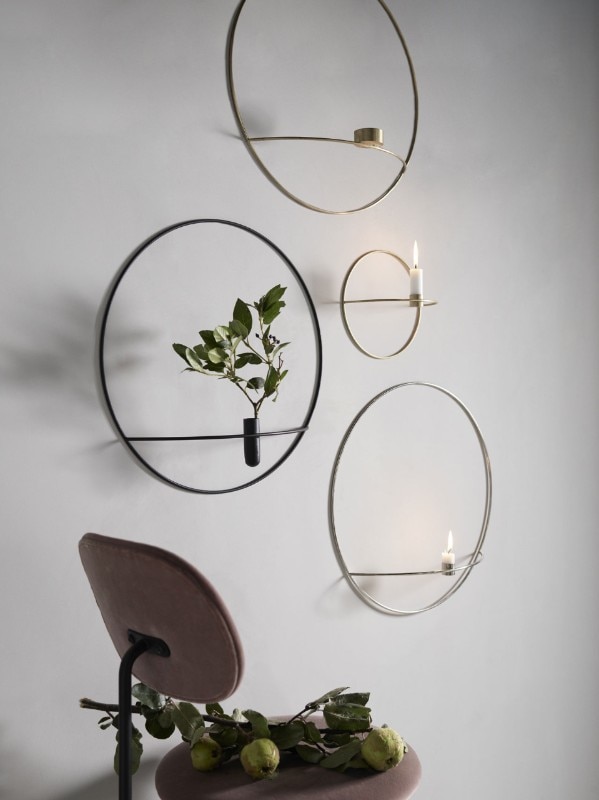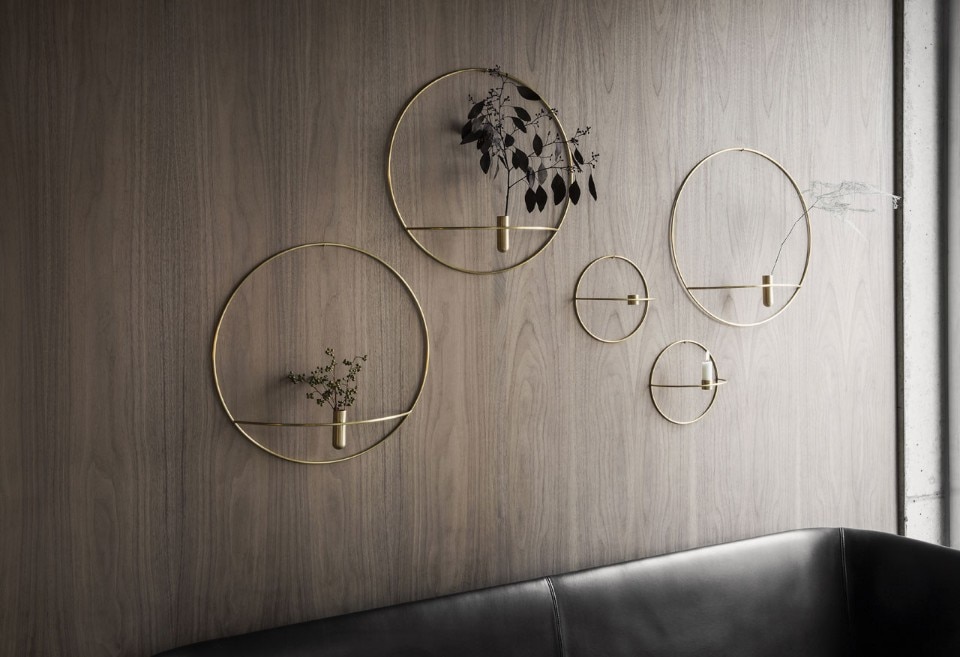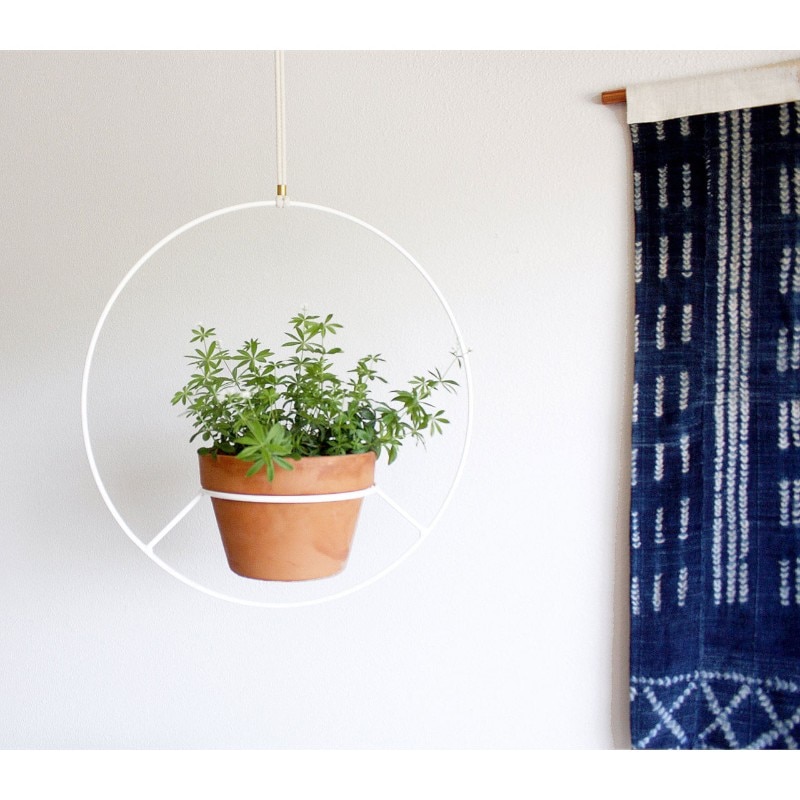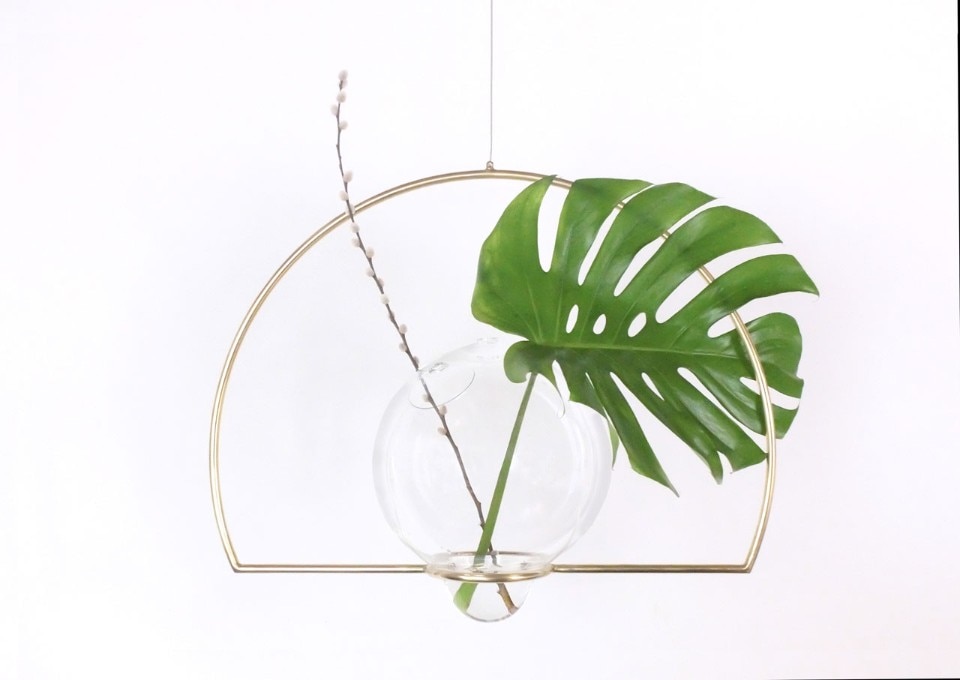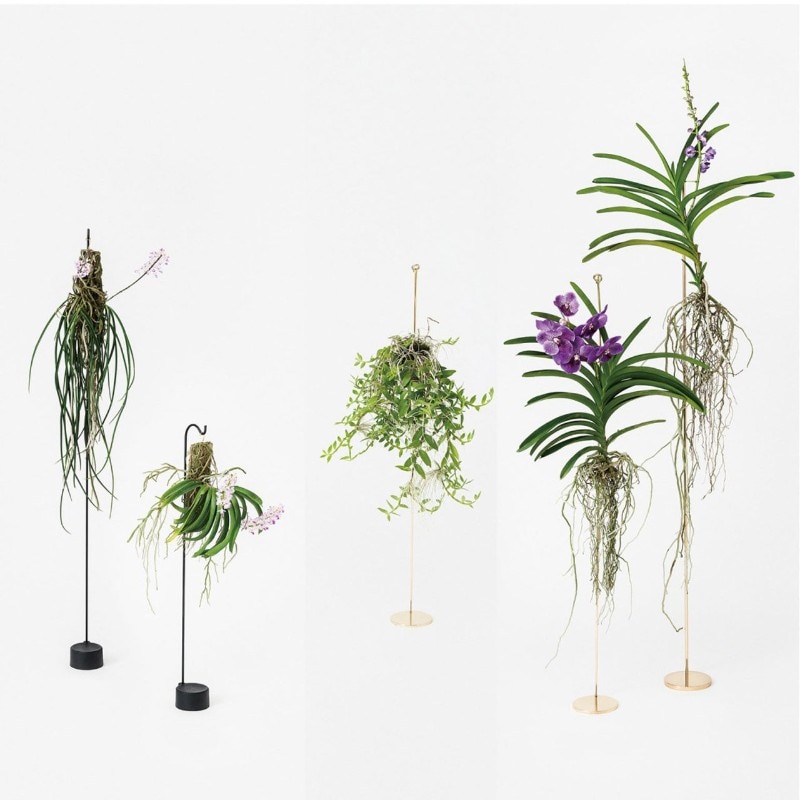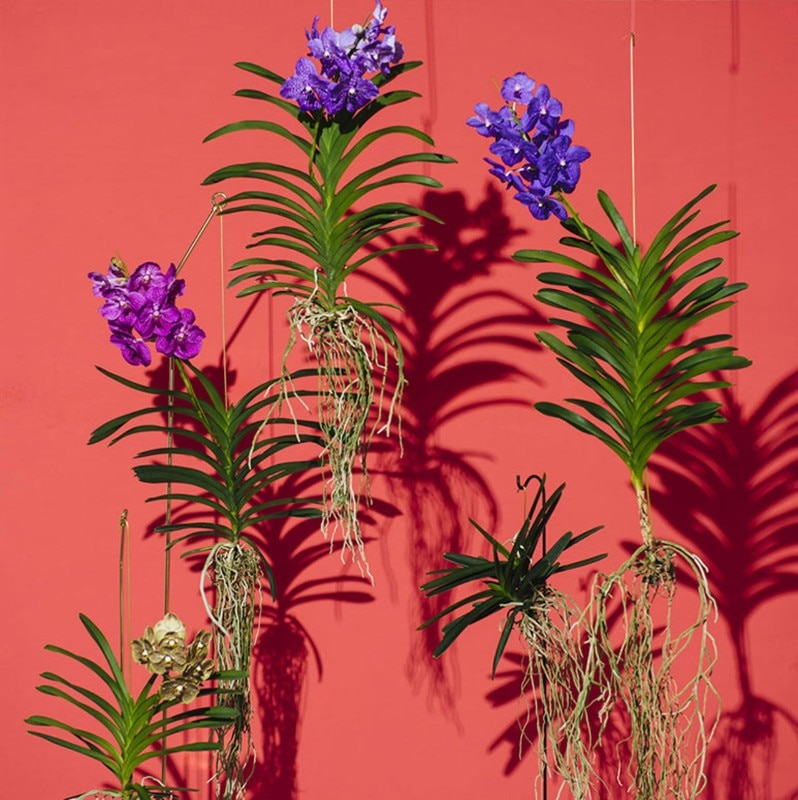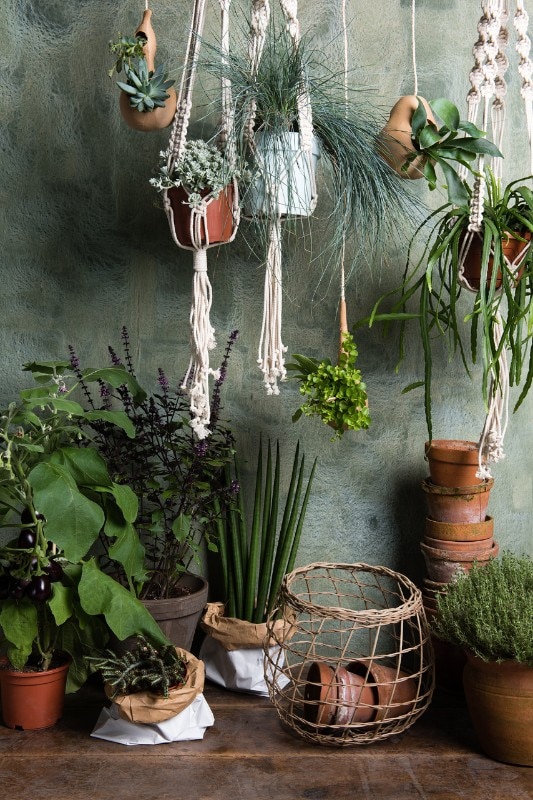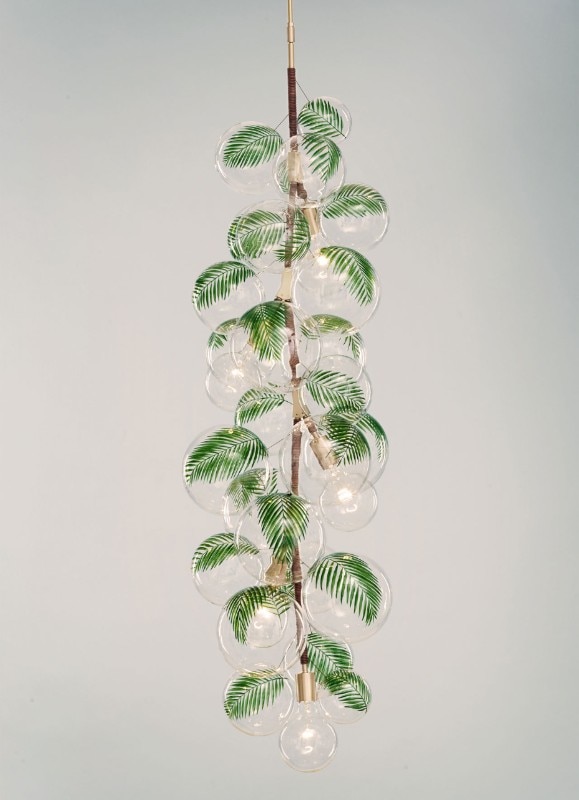They are something which hasn’t been seen since the 1970s but identifying the source of this renewed plague of supports for hanging plants from the ceiling is irrelevant. What is curious is the reason why this return has taken root, becoming almost an essential design touch. The theory of the eternal comeback? More than anything, a strange combination of the disappearance of systems for rendering plants topsy-turvy – that strange conviction that people had that in order to be creative, all one had to do was “be strange” –, and the courage to challenge the theory that domestic accidents claim more victims than smog, something that was clearly demonstrated in a scene from the film The Omen (1978), when, while standing on a stool to tidy the leaves of a hanging plant, Lee Remick falls from the first floor on to the hallway parquet. Of course, what made her lose her balance was Damien, her adopted son, who - being the reincarnation of the Antichrist - had rather lethal pastimes, but it marked the end of the era of hanging ferns in favour (although perhaps not to the advantage) of the Ficus Benjamin in the corner, typical of the 1980s, and the cult of safety. Two generations later, for the sake of both sobriety and recklessness, we are once again experiencing the recklessness of the hippie period. Yet there is much more behind this apparent revival. Just to give an idea of how popular the trend is, the model with the plant on her head in the recent Spring-Summer 2019 Antonio Marras show, as well as being a celebration of the fantastic in the style of Carmen Miranda’s fruit baskets, seems – more than a mere stunt – an invitation to “see” greenery as though it had never been seen before.

 View gallery
View gallery
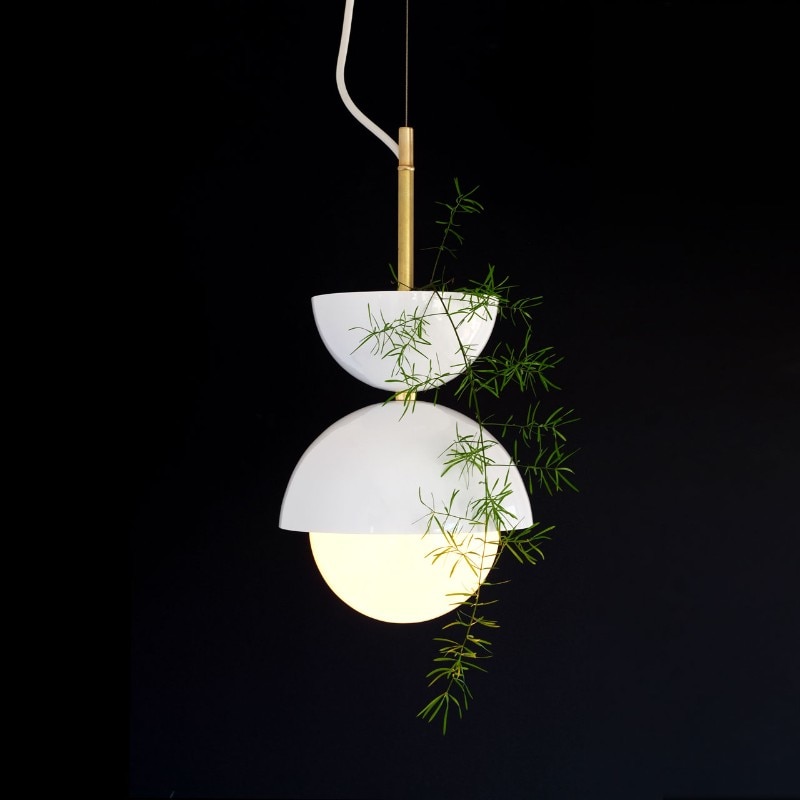
Hemisphere
Suspended light and pendant planter into one, Object Interface
Aluminum, brass, stainless Steel, opal glass
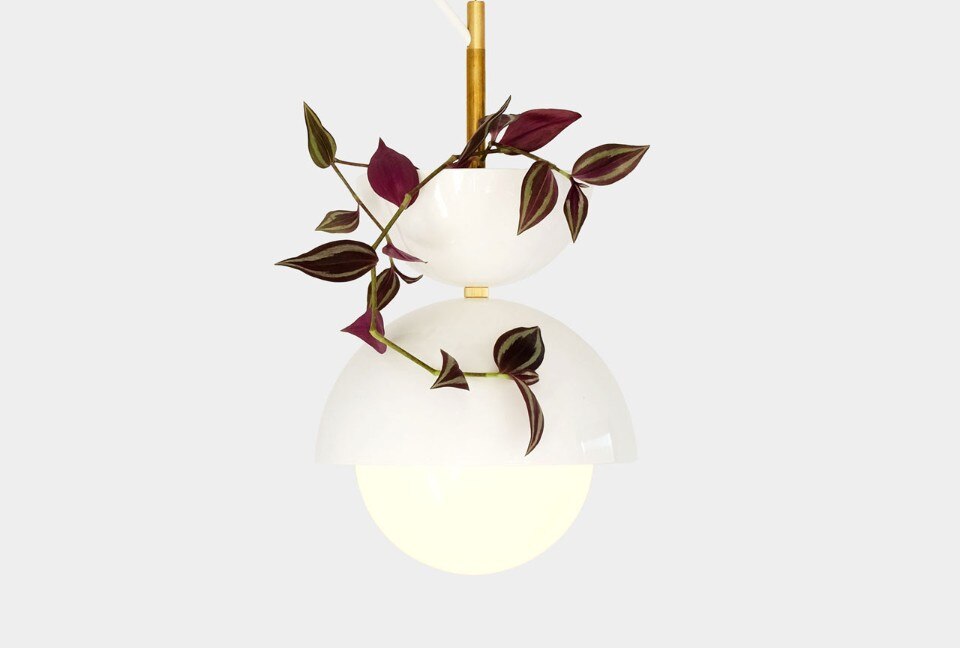
Hemisphere
Suspended light and pendant planter into one, Object Interface
Aluminum, brass, stainless Steel, opal glass
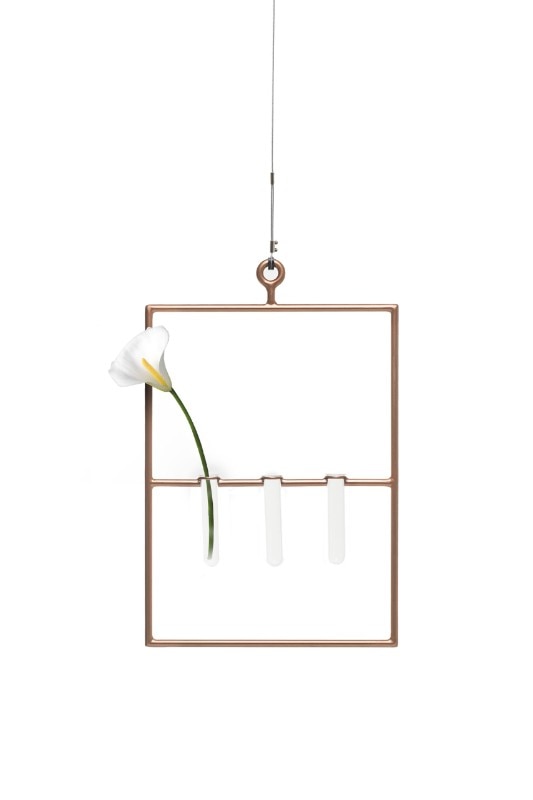
Linus
Suspended structure with single flower vases in line, Kenneth Cobonpue
Chrome, glass
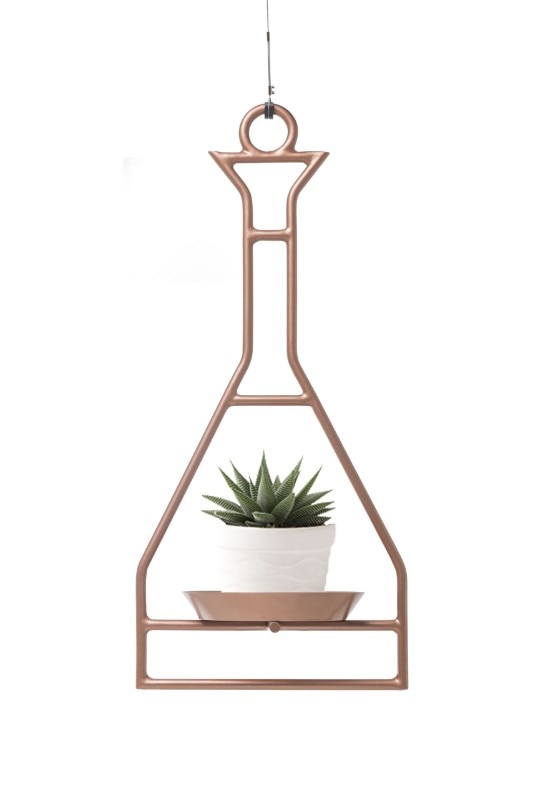
Louis
Suspended structure with single flower vases in line, Kenneth Cobonpue
Chrome, glass
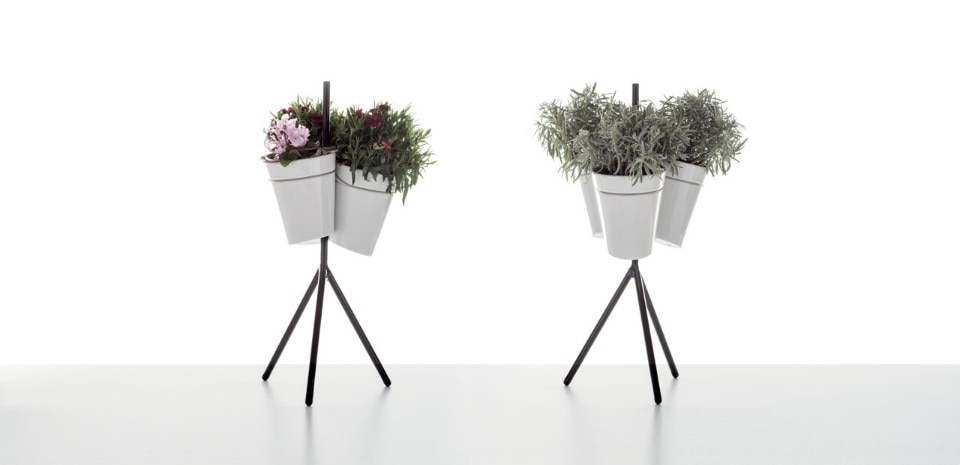
Window garden
Vase system for hydroponic cultivation, BIG (Bjarke Ingels Group), Danese Milano
Pocelain, metal
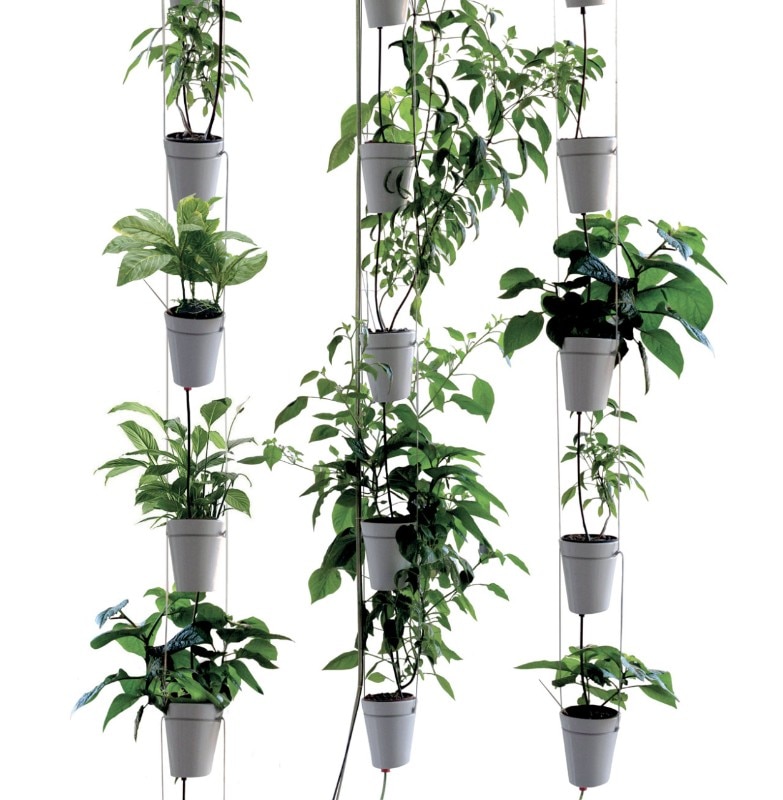
Window garden
Vase system for hydroponic cultivation, BIG (Bjarke Ingels Group), Danese Milano
Porcelain, steel rods

Hemisphere
Suspended light and pendant planter into one, Object Interface
Aluminum, brass, stainless Steel, opal glass

Hemisphere
Suspended light and pendant planter into one, Object Interface
Aluminum, brass, stainless Steel, opal glass

Linus
Suspended structure with single flower vases in line, Kenneth Cobonpue
Chrome, glass

Louis
Suspended structure with single flower vases in line, Kenneth Cobonpue
Chrome, glass

Window garden
Vase system for hydroponic cultivation, BIG (Bjarke Ingels Group), Danese Milano
Pocelain, metal

Window garden
Vase system for hydroponic cultivation, BIG (Bjarke Ingels Group), Danese Milano
Porcelain, steel rods
This is a task that, in today’s stark interiors, is – as shown by the profusion of hooks, supports and nets – the prerogative of plants placed up on high. Faced with the doubt that a simple change in perspective can seriously help to educate through augmented awareness, the garden historian Marco Martella underlines how “nature is always a residual area of resistance that allows one to open up to a profound reflection on ethical and aesthetic values”, even if this experience is reduced to a potted plant rather than the wonders of the gardens of Versailles. But seeing as how dracaenas are now “flying” thanks to designer devices, rendered more beautiful than usual, they teach us more than when they were confined to the landing. After all, as Martella always says, “there is a difference, but not a total detachment, between useful and beautiful”. In this respect, who can say if this boom in supports does not owe much to the ambiguity of Stefano Boeri’s Vertical Forest, which lies somewhere between a green lung and an example of styling. At this point, it has become the true point of origin of an infinite series of repercussions that range from plant shops which - forty years on from the hippie communities – organise courses in macramé for the weaving of cotton nets to hold vases of all sizes, to the decorative uniformity of suspended micro-plants in the design of brand-new restaurants such as Lisbon’s Prado and Leo’s Oyster in San Francisco. This in addition to the justification for trend-following designs that, such as the Balans Mini tables by Feiz Studio for Artifort, goes something like this: “We did it because we noticed that the botanical trend is more fashionable than ever”.
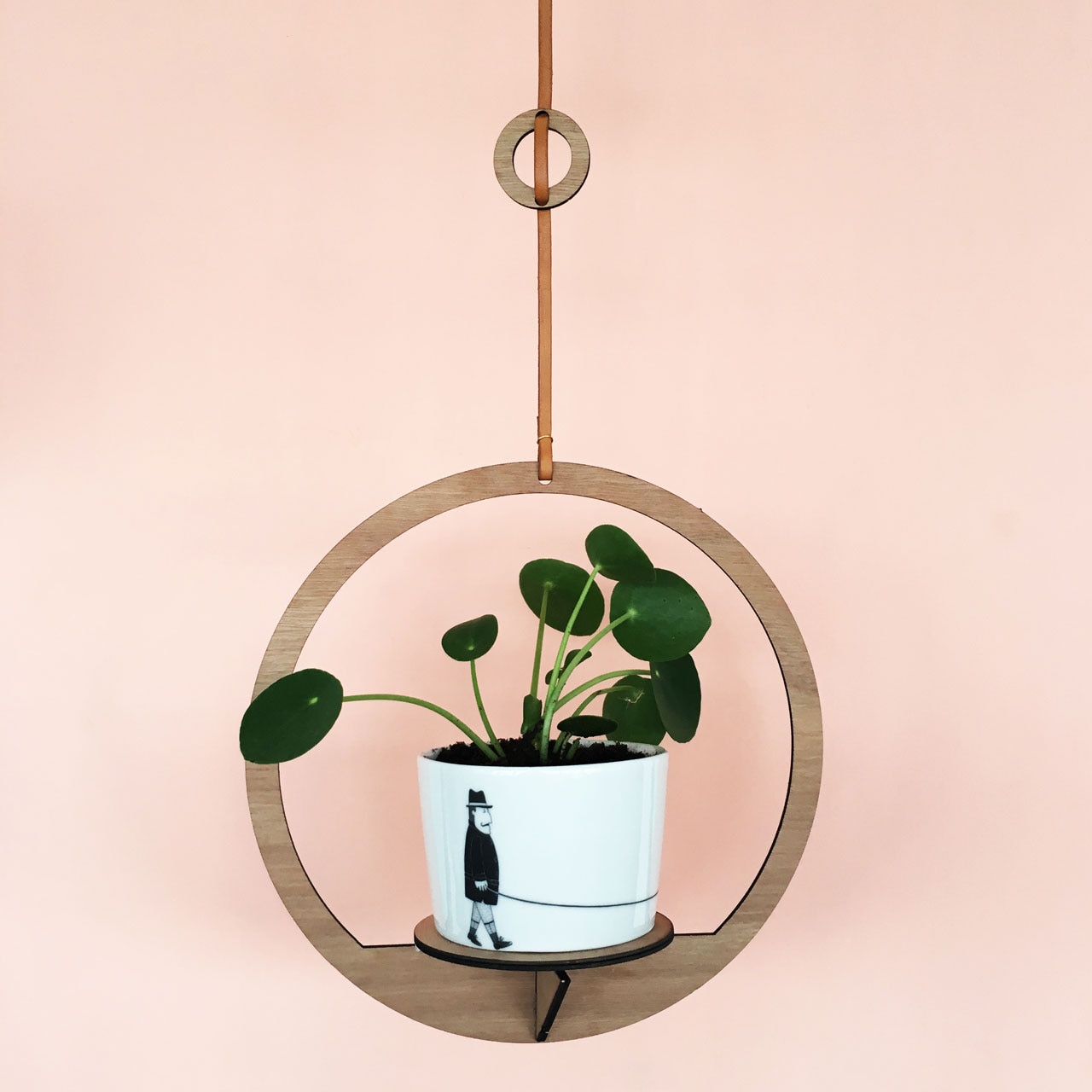
 View gallery
View gallery
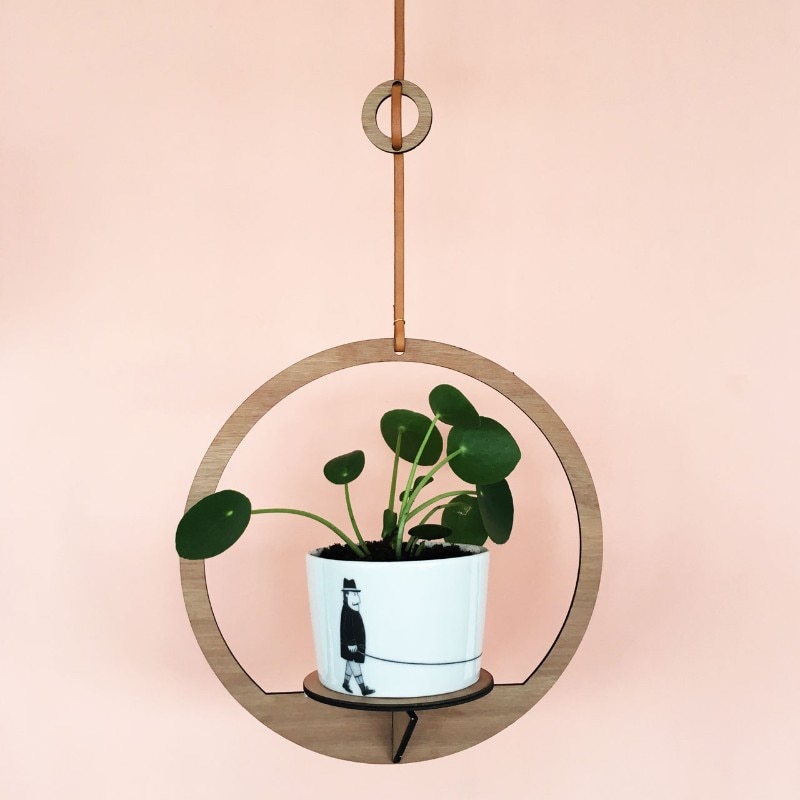
Wooden Airplanter
Rétro vintage hanging wooden planter, All things we like
Wood, rope, metal chain
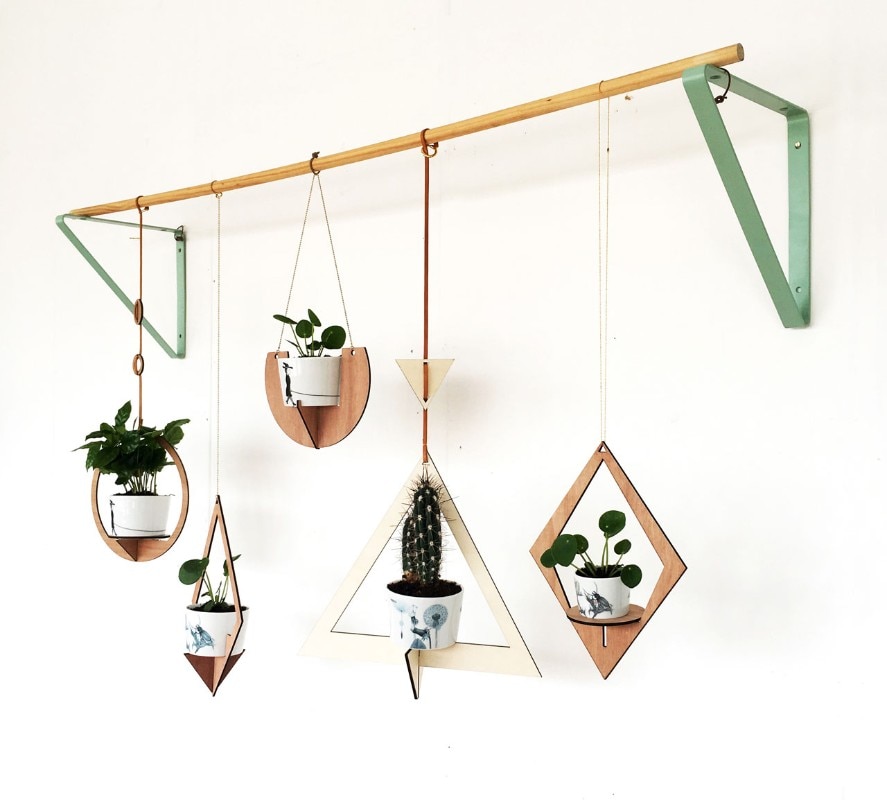
Wooden airplanters
Rétro vintage hanging wooden planters, All things we like
Wood, rope, metal chain
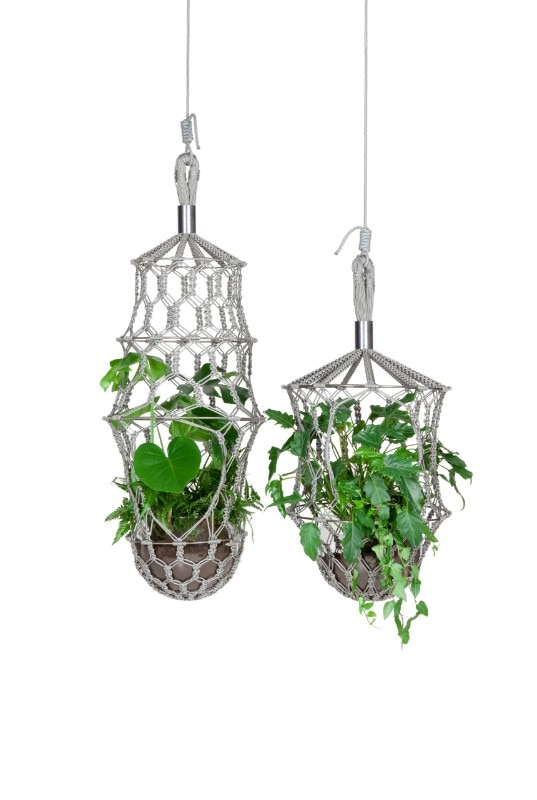
Lucille grand
Hanging macramè spiderweb with glass bowl planter at the bottom, Llot Llov
Rescue ropes, glass
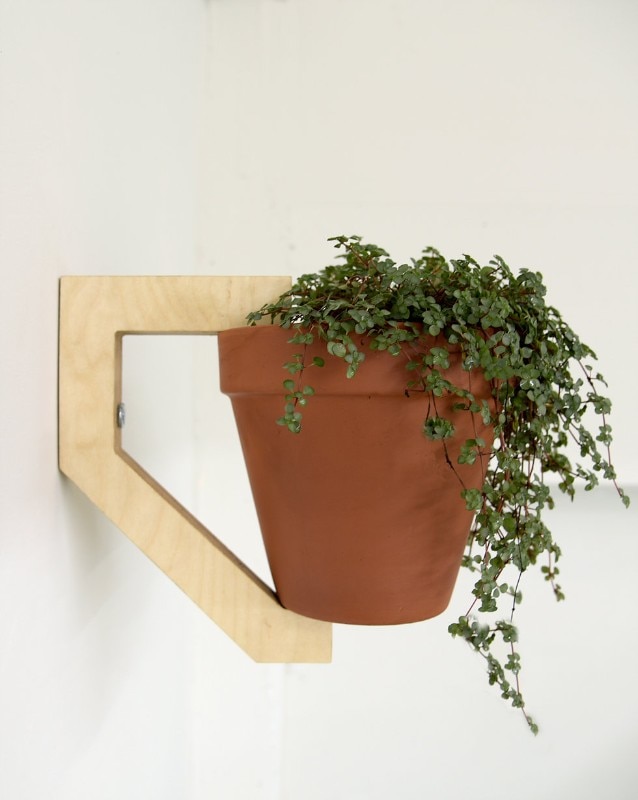
Seven
Wall hanging system specifically desiger for terracotta vases, Butter Design Studio
Wood

Wooden Airplanter
Rétro vintage hanging wooden planter, All things we like
Wood, rope, metal chain

Wooden airplanters
Rétro vintage hanging wooden planters, All things we like
Wood, rope, metal chain

Lucille grand
Hanging macramè spiderweb with glass bowl planter at the bottom, Llot Llov
Rescue ropes, glass

Seven
Wall hanging system specifically desiger for terracotta vases, Butter Design Studio
Wood
Which, as it is a brand that holds in its ranks the genius Pierre Poulin, is not really sufficient excuse for the total abdication in favour of a “hanging” accessory. It is one thing to ride the wave, but it would be better to stick to the class of plant supports that merely raise them with discretion. In an attempt to bring a little order to the various items on offer, putting to one side national pride for the Window Garden vase system by Danese Milano, the situation can be divided between plants suspended by floor-based structures, those suspended from the wall with brass frames, and those hung from the ceiling, which is obviously the most exciting of the three options. What is really striking, almost risking transforming the house into a floating forest, is not so much the vases suspended in wire frames by Norwegian Wood, or the DIY-style shelf-amulet by All things we like, but rather the ceramic pieces fitted to strips of leather by the English Tom Raffield, which look like minimal chic bags. With regards to the wall-hanging situation, just a quick highlighting of the brutal-style novelty of the plant hooks in terracotta by Butter Design Studio as they are among the models which place the plants at arm’s reach, with a floor-mounted base, completely avoiding the falls of The Omen while having all the charm of a suspended plant. This is demonstrated by the kinetic structure of the Eden single-flower vases by Agustina Bottoni, weighed down by an unfinished piece of marble, and the supports with hooks by the Japanese The Design Labo for plants with aerial roots.
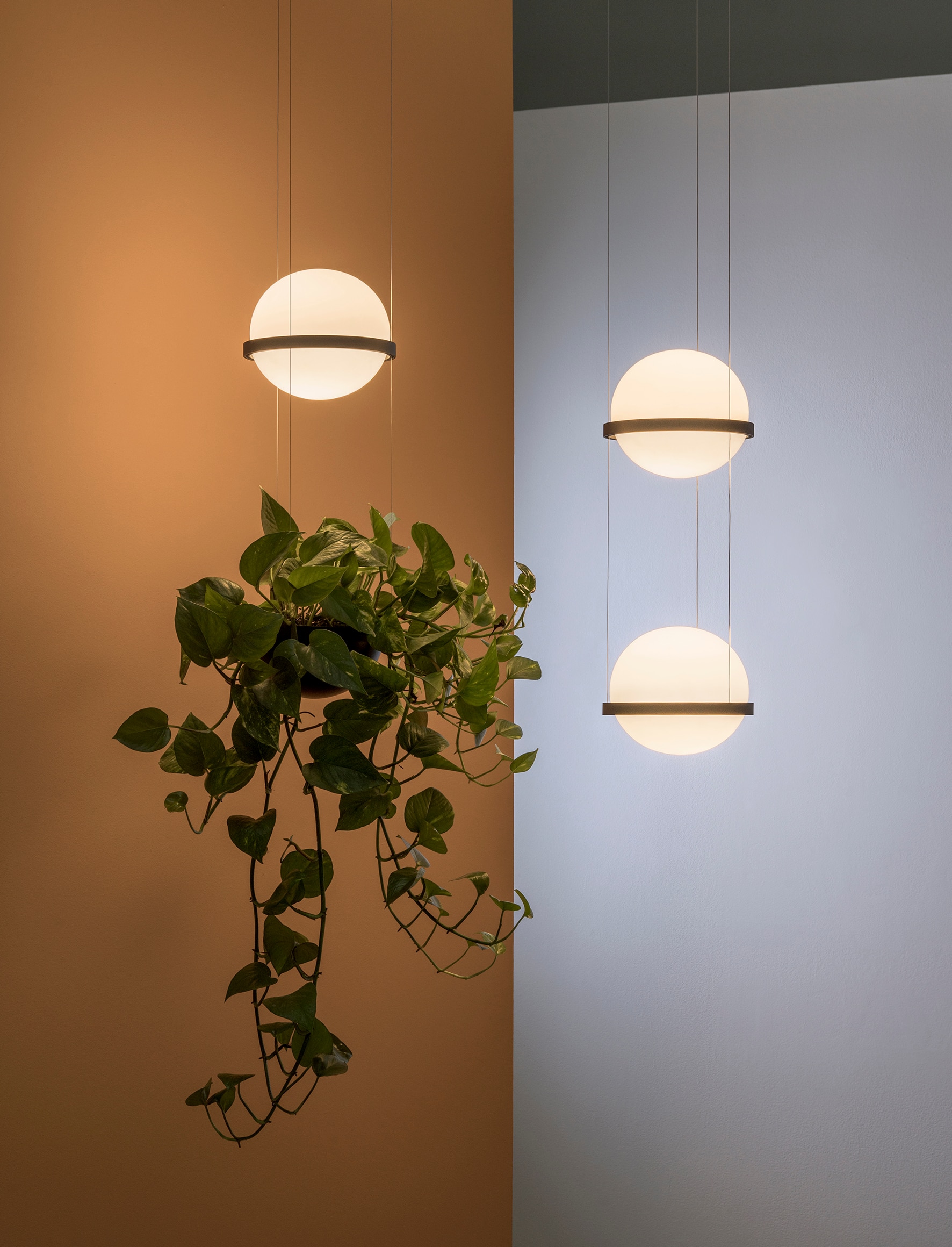
 View gallery
View gallery
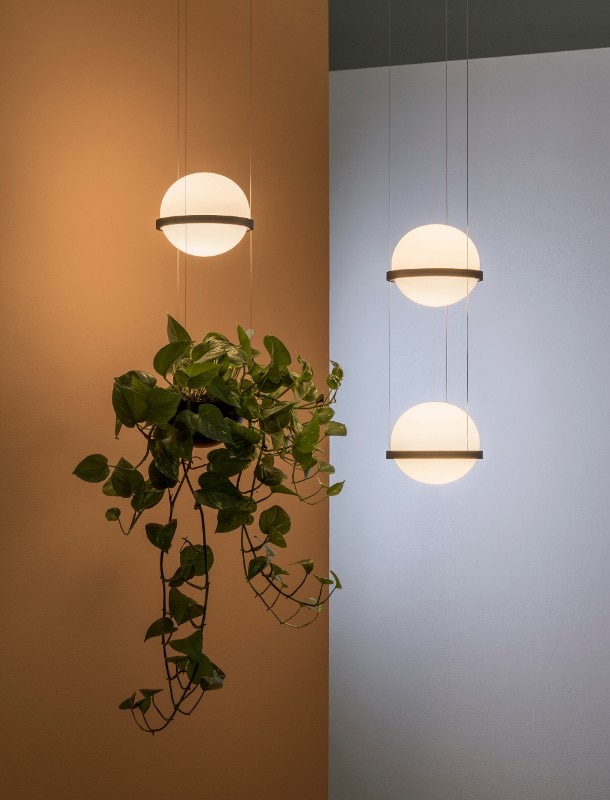
Palma
Multi lighting system mixed with hanging vases, Palma
Opal glass, brass, aluminium rodes
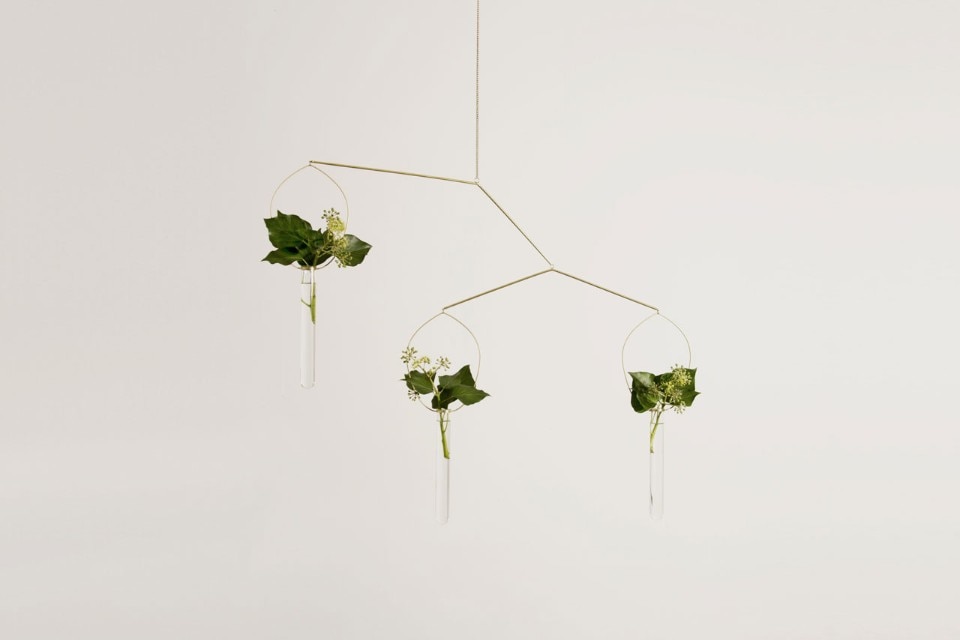
Eden
KInetic sculpture composed of hanging vases swinging in the air, Agustina Bottoni. Ph. Roberto Nino Betancourt
Brass, glass
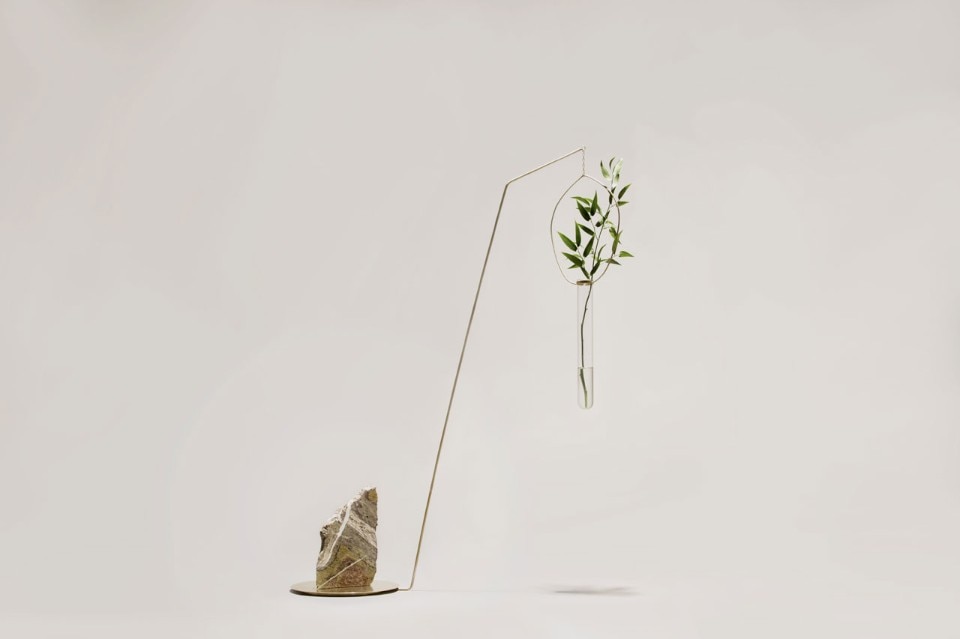
Eden
Kinetic sculpture anchored to the floor and holding a swinging in the air vase, Agustina Bottoni. Ph. Roberto Nino Betancourt
Brass, glass, marble
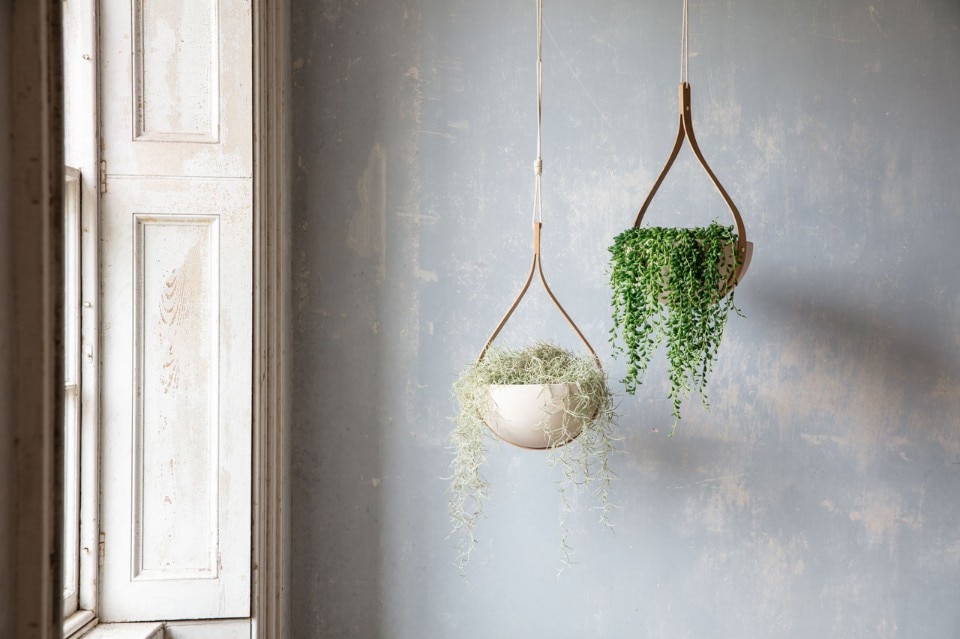
Morvah hangers
White polished terracotta vases hanging to the ceiling through oak wood holders, Tom Raffield
Terracotta, oak wood
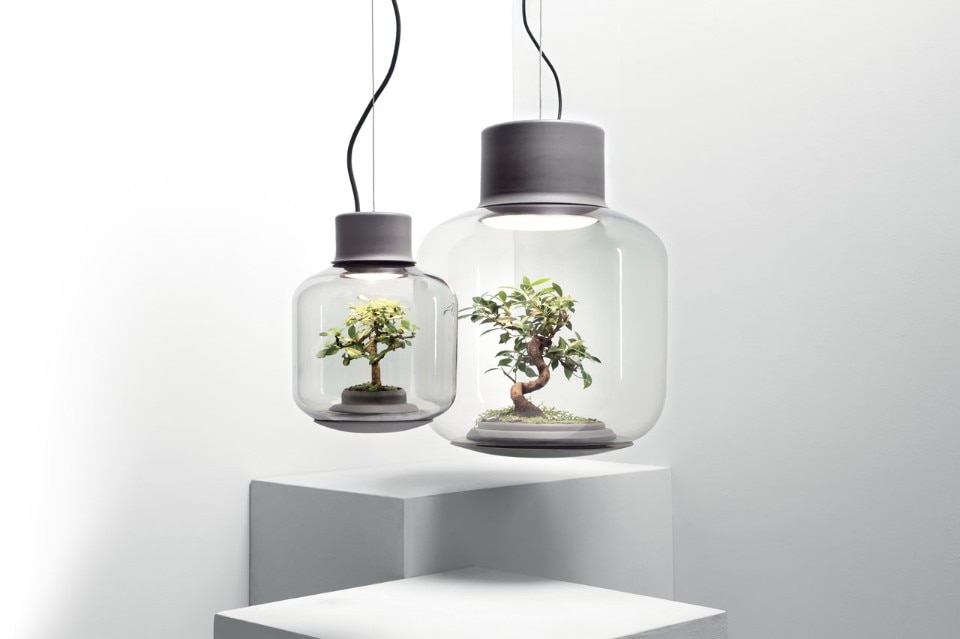
Mygdal plantlight
Self-supporting ecosystem for small plants based on the spectral similarity between its specifically designed LEDs and sunlight, Nui Studio
Blown glass, metal, aluminium
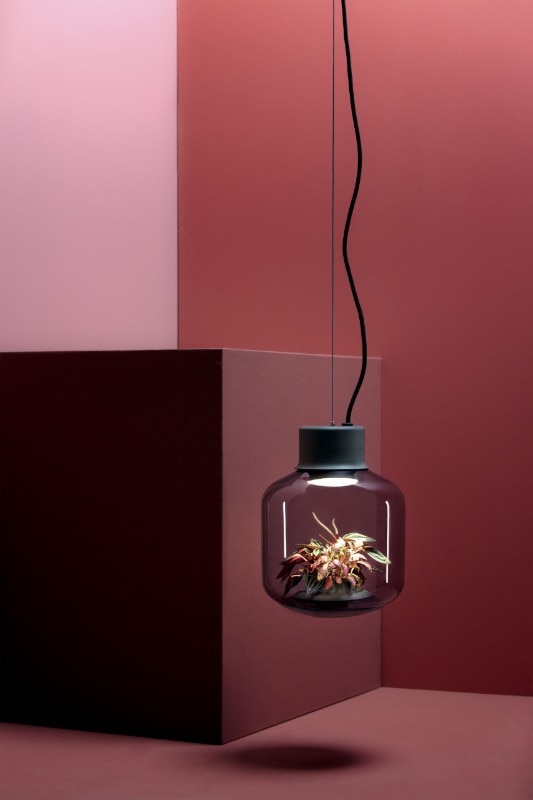
Mygdal plantlight
Self-supporting ecosystem for small plants based on the spectral similarity between its specifically designed LEDs and sunlight, Nui Studio
Blown glass, metal, aluminium

Palma
Multi lighting system mixed with hanging vases, Palma
Opal glass, brass, aluminium rodes

Eden
KInetic sculpture composed of hanging vases swinging in the air, Agustina Bottoni. Ph. Roberto Nino Betancourt
Brass, glass

Eden
Kinetic sculpture anchored to the floor and holding a swinging in the air vase, Agustina Bottoni. Ph. Roberto Nino Betancourt
Brass, glass, marble

Morvah hangers
White polished terracotta vases hanging to the ceiling through oak wood holders, Tom Raffield
Terracotta, oak wood

Mygdal plantlight
Self-supporting ecosystem for small plants based on the spectral similarity between its specifically designed LEDs and sunlight, Nui Studio
Blown glass, metal, aluminium

Mygdal plantlight
Self-supporting ecosystem for small plants based on the spectral similarity between its specifically designed LEDs and sunlight, Nui Studio
Blown glass, metal, aluminium
In drawing up this list, one must not forget the sub-category of the lights which are half opaque sphere - half climbing plant holder by Object Interface and the transparent LED containers Mygdal by Nui Studio, which can even hold a small Bonsai. The rightful receiver of a German Design Award in 2018, Palma by Vibia is an architectural accessory with lights organised either horizontally or vertically alternated with an element dedicated exclusively to plants. Having reached the end of this list, there is however the constant doubt of how effective this pleasant domestication of nature is in communicating the lesson of resistance to be learned from plants, and whether instead it would be better to cultivate leaves and roots in a wilder manner, avoiding the photogenic nature of “frames” posted on Instagram with the bold claim of #jungle, when in fact the look is that timidly satisfied aspect of mini-cinemas, micro-bakeries and little organic vegetable stores, all ambitiously under control. The lesson to be learned from plants is actually much more complex and vaster, as Emanuele Coccia says in The life of plants, it is one of common solidarity between beings who live, breathe and fight alongside us. Perhaps a corner of our homes left to run wild would allow us to benefit in a more honest manner.


